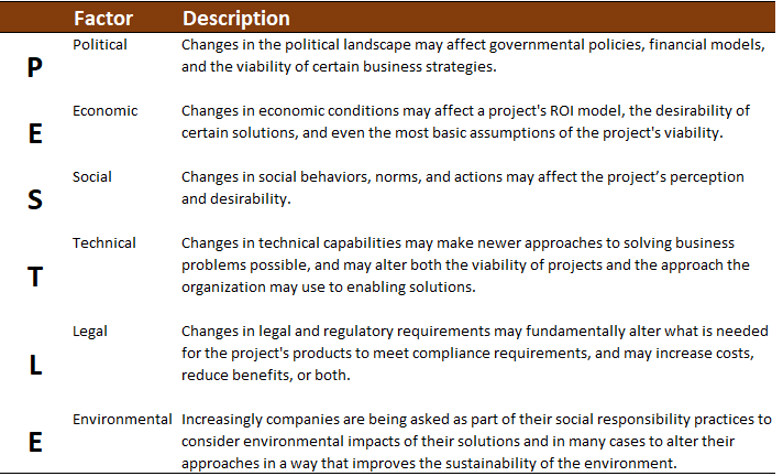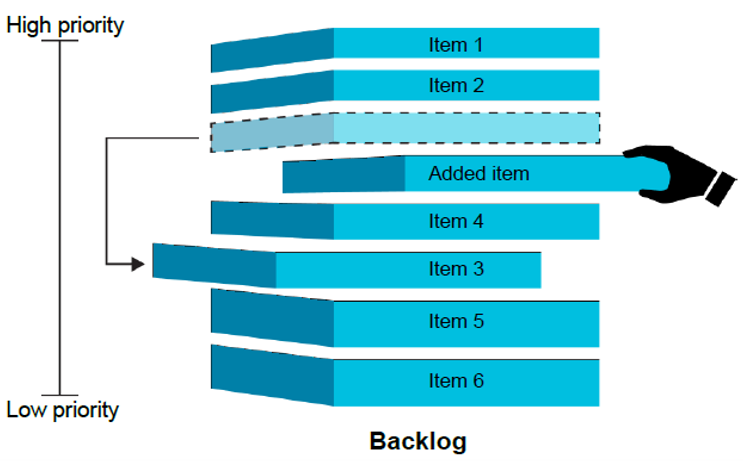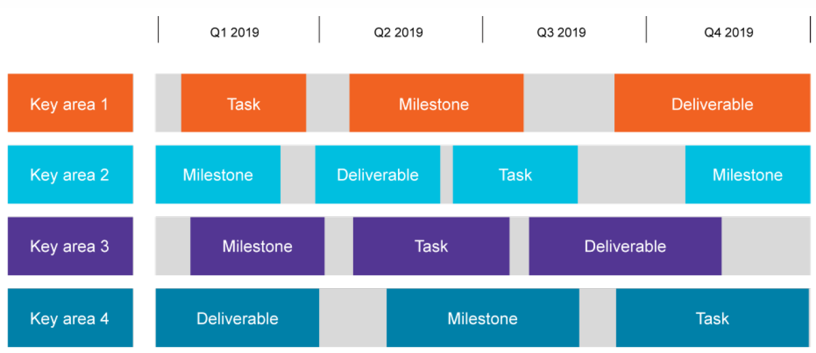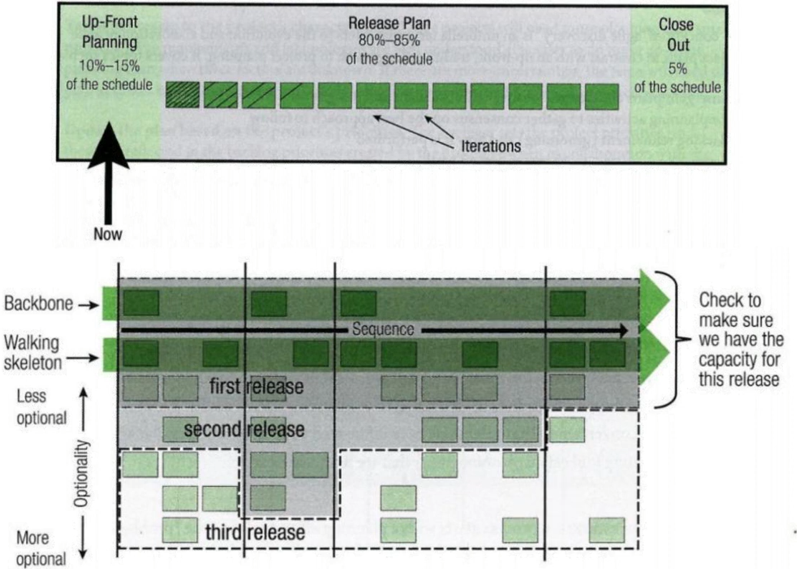Evaluate and address internal and external business environment changes
Enablers
- Survey changes to internal and external business environment. (ECO 3.3.1)
- Assess impact on scope/backlog based on changes in business environment. (ECO 3.3.2)
- Recommend options for changes (e.g., schedule, cost changes). (ECO 3.3.3)
- Reprioritize work/actions.
- Review business environment for impacts on scope/backlog. (ECO 3.3.4)
Deliverables, and Tools

Internal Business Environment
- Organizational changes can dramatically impact the scope of a project.
- Project manager and project sponsor need to have visibility into business plans, reorganizations, process changes, and other internal activities.
- Internal business changes might cause:
- Need for new deliverables
- Reprioritization of existing deliverables
- Elimination of deliverables no longer required
External Business Environment
- PESTLE is an acronym to identify the external business environment factors that can affect the value and desired outcomes of a project.

Update Baselines
- In a traditional project plan, once the initial plan is completed, it is baselined.
- As changes occur in the project, the baseline should be updated to reflect any new requirements.
Change Control Boards
Change Control Boards*: A formally chartered group responsible for reviewing, evaluating, approving, delaying, or rejecting changes to the project, and for recording and communicating such decisions.
- A CCB is designed to manage project change requests.
- The CCB represents key stakeholders and assesses change in terms of cost, risk and value impact.
- Recommend approval of the change request.
- Depending on the scope of the change and established tolerance thresholds, either the project manager or project sponsor can then approve the change.
Configuration Management System
The Configuration Management System * is a collection of procedures used to track project artifacts and monitor and control changes to these artifacts.
- Changes to a project generally result in updates being made to the Configuration Management System.
- The Configuration Management System is intended to maintain a change history of all components being tracked.
Backlog Reprioritization
- Product owner re-prioritizes the backlog as stories or requirements change.
- The business value determines the priority of the changes.

Product Owner Duties
- In an agile project, the role of a product owner is to help the project team prioritize the work based on the value that the capability will provide to the business.
- Accountable for the ultimate business value of the solution the project team produces.
- Creates and socializes the product vision.
- Serves to coordinate different business needs from different stakeholders together into one prioritized product backlog.
- Responsible for defining and prioritizing the user stories in the product backlog.
- Provide guidance to the team on the prioritization of the stories, defines acceptance criteria, and accepts stories.
- Answers team questions about the needed solution.
- Provides timely feedback to the team.
Recommended Options for Changes
- When a change is proposed, the focus from the product owner should be on the intended business value of the change.
- User stories follow this general pattern:
- "As a name of role, I want to do something so that I get a result I want.“
- User story approach focuses on the stakeholder, the need, and the desired outcome and not on a particular solution approach.
- Generally it is best practice to give the project team discretion to consider the change and identify potential solution options. Then, the team can vet the options with the product owner to come up with an agreed-on approach.
Updated Roadmaps
- Roadmaps are used to provide high-level visibility into the overall project, key deliverables, immutable project dates, and how and when certain capabilities may be made available, at least in a Minimum Viable Product. Note that a roadmap is not intended to be anywhere near as detailed as a traditional project plan that includes detailed schedules, work packages, and timelines stretching out for a year or more.
- Instead, an effective roadmap is high-level, ensures that stakeholders are all clearly aware of key high-level needs and milestone dates, but does not provide the level of granular detail around exactly when certain features will be done because this will likely change as the product owner adds and reprioritizes needs over the project lifecycle.
- As the project progresses, typically every month the roadmap should be updated. The roadmap will reflect changes made to the backlog, whether through adding new desired capabilities or reprioritizing existing ones based on changing business needs. This ongoing iterative process ensures that the project team is always working on the highest value items, is delivering the highest value components of the solution first, enables early delivery of the high value items, and generates feedback that will help the team and the product owner to surface additional needs.
Updated Roadmaps
- Swimlane roadmaps provide high-level visibility to the overall project tasks, deliverables, and milestones.
- Road map should reflect changes made to the backlog.

Release Planning
Traditional projects have a single release at the end of the project.
Agile projects might have multiple releases of different aspects of the solution as they are ready.
Establish a Minimum Business Increment (MBI) to:
- Mitigate project risks
- Start to gain value from solution early
- Generate real feedback from users
After the initial release is executed, the product owner identifies additional releases of the solution.
Releases may be planned based on accomplishing a certain set of features or at a regular time cadence.
Release planning driven by the ability to enable business value.
Release Planning

Governance Steering Committee
The overall governance or steering committee that coordinates the project might be called the Project Board.
This committee might include the project sponsor, a senior user, and PMO resources.
Responsibilities include:
- Clarifying the project charter and objectives
- Allocating the resources to the project
A clear governance becomes critical when there are project changes driven by changes in the internal or external business environments.
Guidelines for Assessing the Impact on Project Backlog Based on Business Environment Changes
- Understand the project's organizational context.
- Understand the external factors that may impact your project.
- How is your project's work prioritized?
- What is the project's governance model?